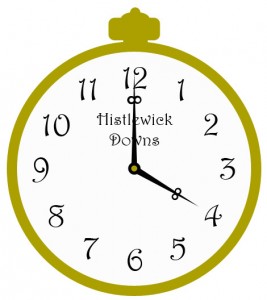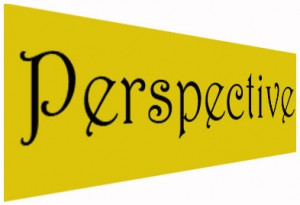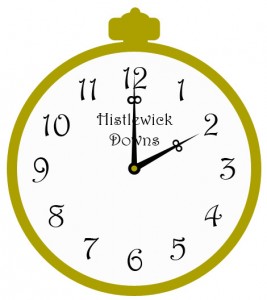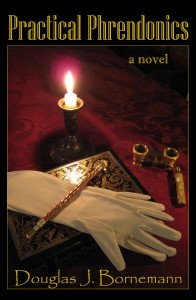Well, I did it. This weekend I finally put a little skin into the game. Up to now, I’ve risked only my free time and a few dollars here and there on this writing habit. For me, spending real money to attend the Southern California Writers’ Conference is a declaration of serious intent—a defiant internal proclamation that I’ve finally evolved beyond the ‘mere dabbler’ stage. My wife Genelle Belmas (a published textbook author in her own right) not only supported the decision, she decided to accompany me. How cool is that?
For me, the most exciting part of the conference was also the shortest. For an extra fee, I participated in Advance Submission Critique program, in which a professional evaluates the first 15 or 20 pages of your work and discusses its strengths and weaknesses with you for fifteen minutes. You can choose critics from a wide range of disciplines, including editors, publishers, authors and agents. My first meeting was with Jennifer Silva Redmond, editor-in-chief of Sunbelt Publications. I was heartened that she spent very little time on the submission itself and much more time on very helpful suggestions to tighten and improve my query letter. I took that to mean that at least the first few chapters of Practical Phrendonics might actually be ready to submit to agents. Thank you, Jennifer, for the morale boost!
My second Advance Submission Critique went even better. This time I met with Marisa Iozzi Corvisiero, Esq., agent and founder of the Corvisiero Literary Agency. After a discussion of some events that take place outside the scope of the submitted material, she suggested that Practical Phrendonics, which I pitched as a trilogy, would most likely fall within the fantasy genre (a genre that fortunately tolerates somewhat longer word counts). She then asked me to submit a query, synopsis, and full manuscript of book one for her to review, with the possibility of an offer to represent if the rest of the manuscript meets with her approval. That alone made the whole conference worthwhile!
The decision to attend the conference in the first place arose out of the realization that writing is more than just a craft; it’s a culture. Unlike a lottery, where all you have to do is buy a ticket to get an equal chance to win, in fiction writing, there seems to be consensus that your chances of success are influenced to some degree by how well you play the game—and you can’t learn the rules simply by sitting in your office and writing.
In accordance with that premise, our first workshop of the conference began with a discussion of genre, which is the framework that publishers and bookstores use to categorize fiction. Freelance editor Jean Jenkins did an excellent job of explaining genre basics. Essentially, bookstores arrange books on shelves according to both genre, and how well a particular genre sells. For authors, awareness of genre may help steer your writing to a more lucrative category, or on a more basic level, may help with getting your manuscript published, since many agents and publishers only accept manuscripts from a certain subset of genres. That means they’ll expect authors to understand how to determine the genre of their material and follow the rules appropriate to that particular genre. For example, each genre has its own acceptable range of word count, and if your manuscript is too long or too short, it is likely to be rejected on that basis. Some genres, such as romance and mystery have very specific requirements for when certain plot devices should appear. While you may end up bending or breaking some of those rules deliberately in crafting your novel, the more you do so, the more you risk rejection. A prudent author, therefore, may want to pick his or her battles carefully—breaking only those rules that are critical, and scrupulously adhering to the rest. Most genres can be broken down into a myriad of different sub-genres, each with its own idiosyncratic rules. The umbrella category of Mystery, for example, includes subcategories such as Cozies, Noir, Amateur Sleuth, Police Procedural, Hard-Boiled, and so on.
Next, I experienced my first Read and Critique session ably moderated by Matthew J. Pallamary, author, shamanic explorer, and editor-in-chief of Muse Harbor Publishing. I chose to observe this session rather than participate since it was my first exposure to a Read and Critique. In these sessions, writers select five pages of their work to read aloud for the group to critique. The writer is not permitted to speak until the critiques are finished, and the critics are only permitted to address the style and effectiveness of the prose, not the subject matter. These sessions take place continuously throughout the conference, including rogue sessions that run late into the evening. So, if it’s this type of feedback you want, there are ample opportunities to get it. I could see these sessions being quite helpful for working the kinks out of a troublesome passage. If your prose is good, I think it would also be a great way to help people to connect you with your writing style. Now that I know how it works, I’d be tempted to give it a shot, but I’d definitely want to choose my passage carefully and make certain it was as polished as I could possibly make it.
The banquet speaker was delightful and came equipped with a compelling real-life publication story for his first novel. Selden Edwards developed the basic premise for his bestselling novel The Little Book thirty years ago: What if someone from the present day were to wake up one day and find himself in Vienna at the end of the 19th century? After working on the manuscript all that time thinking no one was going to publish it, Selden was (pleasantly) dumbstruck when the promotion of the work by his freelance editor to an agent resulted in a call in which the agent insisted on representing the work. Soon he had an offer in hand—an offer in the high six-figures! By all accounts, Seldon artfully interweaves fiction and Viennese history to remarkable effect. We’ll know first-hand soon enough, since we got an autographed copy! His second novel, The Lost Prince, is newly available as well.
It was also a real treat to meet and get to know Mary Vensel White. Mary’s debut novel, The Qualities of Wood was a 2012 International Book Award-Winner and also had the distinction of being the first e-book published under the new HarperCollins digital imprint Authonomy. Stunningly well-read, Mary was a wealth of insights, tips, and anecdotes that kept us edified and entertained throughout the conference. We’ve downloaded a copy of her book and are both eagerly looking forward to reading it.
Other highlights include the Pitch Witches session, which had valuable tips for distilling the elements of your novel down into a concept suitable for hooking your audience, and the Agents and Editors panel discussion on the Perils of Premature ePublication, which discussed, in depth, the advantages and pitfalls inherent in the rapidly changing world of epublication. I even allowed Genelle to drag me to a session entitled Hanky Panky, Writing the Erotic, expertly and entertainingly mediated by Marilyn Friedman. It was perhaps the most eclectic of the sessions I attended, and definitely the one with the most laughs. Marilyn is a founder of the Writing Pad, where writers can get training in a safe small-class setting. Bravo, Marilyn!
Obviously, the conference was a huge success for me, if only for the solicitation of my manuscript, but what about for Genelle? While I can’t speak for her, I did catch her checking out the website for the next Southern California Writers’ Conference to be held in San Diego in February. I wonder if she’ll invite me to go, too?
Likes (0)Dislikes
(0)Dislikes (0)
(0) Like this:
Like Loading...
 (0)Dislikes
(0)Dislikes (0)
(0)









